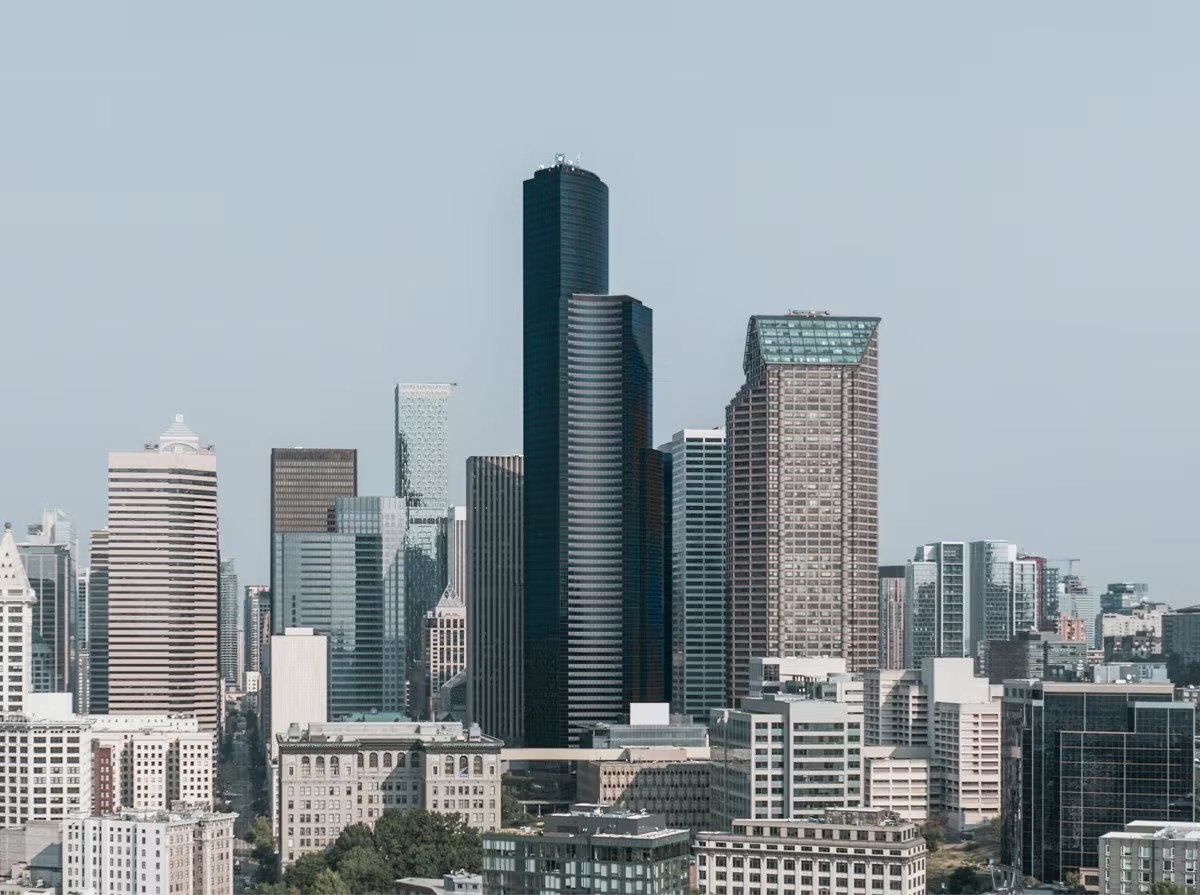DocuSign Tower vs Columbia Center


Comparing the DocuSign Tower and the Columbia Center is interesting because they both stand in Seattle, WA, and were completed within 2 years of each other, but they were designed by different architects.
This offers a unique glimpse at how rival designers approached projects in the same city during the same era.
Height & Size
The Columbia Center is clearly the larger tower of the two, both in terms of height and number of floors. It rises to 932ft (284m) with 76 floors above ground, while the DocuSign Tower reaches 574ft (175m) with 47 floors above ground.
Of course, each project may have faced different briefs or regulatory constraints, which we don't really know about and could also explain the outcome.
Architectural Style
Both the DocuSign Tower and the Columbia Center were designed in line with the aesthetic conventions of the Modern style.
Both buildings were completed when the Modern style was already past its peak. This makes them feel like late echoes of the movement, more reflective of continuity or nostalgia than of cutting-edge design at the time.
Uses
Both the DocuSign Tower and the Columbia Center were designed to serve as commercial towers, and that has remained their main use since their completion, serving similar roles in the urban fabric.
Both towers provide significant parking capacity, with DocuSign Tower offering 668 spaces and the Columbia Center offering 700.
Structure & Facade
Both the DocuSign Tower and the Columbia Center rely on a Frame structural system.
A frame structure uses a grid of columns and beams to carry the building's loads. This frees the walls from structural duties, allowing for flexible floor plans and larger windows.
They also employ the same type of facade, a Curtain Wall facade.
A curtain wall is a non-load-bearing facade hung from the structural frame. It is anchored to floor slabs and transfers only its own weight and wind loads, allowing for sleek, glassy exteriors.
| DocuSign Tower | Columbia Center | |
|---|---|---|
| McKinley Architects | Architect | Chester Lindsey Architects |
| 1983 | Year Completed | 1985 |
| Modern | Architectural Style | Modern |
| Commercial | Current Use | Commercial |
| 47 | Floors Above Ground | 76 |
| 6 | Floors Below Ground | 7 |
| 175 m | Height (m) | 284 m |
| 24 | Number of Elevators | 48 |
| Frame | Structure Type | Frame |
| Steel | Vertical Structure Material | Steel |
| Concrete And Steel | Horizontal Structure Material | Poured Concrete Over Metal Decking |
| No | Facade Structural? | No |
| Glass, Steel | Main Facade Material | Granite, Glass, Steel |
| Howard S. Wright Construction | Main Contractor | Howard S. Wright Construction |
| Harold Jon Runstad | Developer | Martin Selig |
| WA | State | WA |
| Seattle | City | Seattle |
| 999 Third Avenue | Address | 701 5th Avenue |